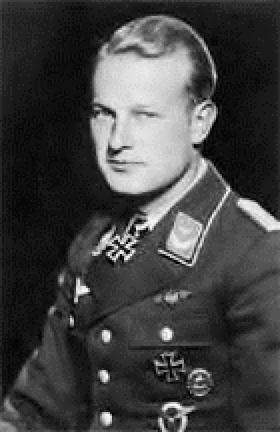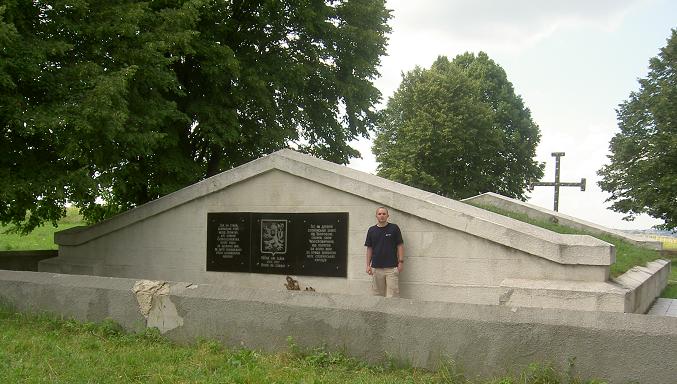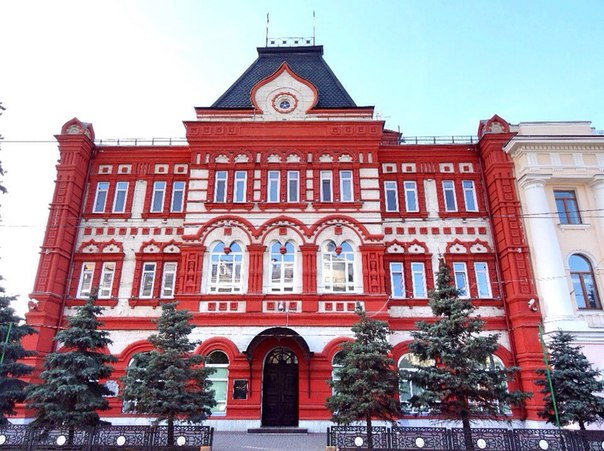|
12th Flak Division (Wehrmacht)
The 12th Flak Division () was a flak division of the Luftwaffe of Nazi Germany during World War II. It was active from early 1942 until 1945. History The 12th Flak Division was formed in early 1942 (probably on 1 February 1942) in the central sector of the Eastern Front from the staff of the 9th Flak Brigade. It took over the former 9th Flak Brigade's air signals detachment, which became Air Signals Detachment 132 under command of the 12th Flak Division. It was the first newly-formed motorized flak division that was deployed in the field to provide additional combat strength on the Eastern Front, in this case to Army Group Center in the aftermath of the Battle of Moscow (1941/42). In May 1942, it was placed in charge of the air defense of the southern part of the army group, including the 2nd Army and 4th Army, by taking over the 21st, 34th and 101st Flak Regiment from 18th Flak Division. The initial divisional commander was Gotthard Frantz. On 21 December 1942, Ernst Buf ... [...More Info...] [...Related Items...] OR: [Wikipedia] [Google] [Baidu] |
Luftwaffe
The ''Luftwaffe'' () was the aerial-warfare branch of the German ''Wehrmacht'' before and during World War II. Germany's military air arms during World War I, the ''Luftstreitkräfte'' of the Imperial Army and the '' Marine-Fliegerabteilung'' of the Imperial Navy, had been disbanded in May 1920 in accordance with the terms of the 1919 Treaty of Versailles which banned Germany from having any air force. During the interwar period, German pilots were trained secretly in violation of the treaty at Lipetsk Air Base in the Soviet Union. With the rise of the Nazi Party and the repudiation of the Versailles Treaty, the ''Luftwaffe''s existence was publicly acknowledged on 26 February 1935, just over two weeks before open defiance of the Versailles Treaty through German rearmament and conscription would be announced on 16 March. The Condor Legion, a ''Luftwaffe'' detachment sent to aid Nationalist forces in the Spanish Civil War, provided the force with a valuable testing grou ... [...More Info...] [...Related Items...] OR: [Wikipedia] [Google] [Baidu] |
Zboriv
Zboriv ( uk, Зборів, pl, Zborów, yi, זבאָרעוו, Zbarav, russian: Зборов) is a town in Ternopil Raion of Ternopil Oblast, west Ukraine. It is located in the historical region of Galicia. Local government is administered by Zboriv town council. Zboriv hosts the administration of Zboriv urban hromada, one of the hromadas of Ukraine. Population: The town (located northwest of Ternopil, and southeast of Lviv) lies on the Strypa River ( uk, Cтpипа). History It was mentioned for the first time in a document from 1166. In 1241, during the Mongol invasion of Europe, it was ransacked and destroyed. In 1639, Zboriv was granted city rights. Its present name comes from a noble Polish family of Zborowscy. Ten years later, Zboriv was besieged by the Tartar-Cossack armies during the Khmelnytsky Uprising. In 1913, Zboriv had about 6000 inhabitants, including 2400 Ukrainians, 1300 Poles and 2300 Jews. During World War I, the town's vicinity was the site of heavy fig ... [...More Info...] [...Related Items...] OR: [Wikipedia] [Google] [Baidu] |
23rd Flak Division
Third or 3rd may refer to: Numbers * 3rd, the ordinal form of the cardinal number 3 * , a fraction of one third * Second#Sexagesimal divisions of calendar time and day, 1⁄60 of a ''second'', or 1⁄3600 of a ''minute'' Places * 3rd Street (other) * Third Avenue (other) * Highway 3 Music Music theory *Interval number of three in a musical interval **major third, a third spanning four semitones **minor third, a third encompassing three half steps, or semitones **neutral third, wider than a minor third but narrower than a major third **augmented third, an interval of five semitones **diminished third, produced by narrowing a minor third by a chromatic semitone *Third (chord), chord member a third above the root *Degree (music), three away from tonic **mediant, third degree of the diatonic scale **submediant, sixth degree of the diatonic scale – three steps below the tonic **chromatic mediant, chromatic relationship by thirds *Ladder of thirds, similar to the ... [...More Info...] [...Related Items...] OR: [Wikipedia] [Google] [Baidu] |
Vitebsk
Vitebsk or Viciebsk (russian: Витебск, ; be, Ві́цебск, ; , ''Vitebsk'', lt, Vitebskas, pl, Witebsk), is a city in Belarus. The capital of the Vitebsk Region, it has 366,299 inhabitants, making it the country's fourth-largest city. It is served by Vitebsk Vostochny Airport and Vitebsk Air Base. History Before 1945 Vitebsk developed from a river harbor where the Vićba River (Віцьба, from which it derives its name) flows into the larger Daugava River, Western Dvina, which is spanned in the city by the Kirov Bridge. Archaeological research indicates that Baltic tribes had settlements at the mouth of Vitba. In the 9th century, Slavic settlements of the tribal union of the Krivichs replaced them. According to the ''Chronicle of Michael Brigandine'' (1760), Princess Olga of Kiev founded Vitebsk (also recorded as Dbesk, Vidbesk, Videbsk, Vitepesk, or Vicibesk) in 974. Other versions give 947 or 914. Academician Boris Rybakov and historian Leonid Alekseyev ha ... [...More Info...] [...Related Items...] OR: [Wikipedia] [Google] [Baidu] |
II Flak Corps
A flak corps (german: Flakkorps) was a massed anti-aircraft (AA) artillery formation employed by the '' Luftwaffe'' for anti-aircraft, antitank, and fire support operations in World War II. A ''Flakkorps'' was a flexible organization that was made up of a varying number of AA regiments, brigades, or divisions. A total of six flak corps were organized by Germany during the war. The flak corps, while mainly intended to support ground units with concentrated anti-aircraft fire, in many cases provided also antitank support. History Flak corps did not exist before World War II. Until the end of war Germany eventually organized a total of six flak corps, being numbered I - VI, plus one short-lived special flak corps. Flak corps I and II were formed on 3 October 1939. They grouped previously existing mobile AA battalions so as to overwhelmingly concentrate their firepower at points of decision on the battlefield. The original two flak corps were used in the Battle of France in 1940, a ... [...More Info...] [...Related Items...] OR: [Wikipedia] [Google] [Baidu] |
10th Flak Brigade
This is a list of German brigades in World War II. The list aims to include all brigade-level military formations of the German Wehrmacht and Waffen-SS during World War II. Brigades, in German army parlance prior to 1944, generally designated formations of two regiments from the same branch of arms. For instance, german: 2. Panzer-Brigade, links=no, label=none contained the Panzer Regiments 3 and 4. The usage of the term shifted in the army after 30 May 1944, when it was redefined to apply to singular strengthened regiments. Heer Infantry brigades The number of infantry brigades increased notably after 30 May 1944, when the previously-accepted meaning of brigade, group of two regiments of the same branch, was changed to instead designate a singular strengthened regiment. In such a fashion, the Grenadier Regiments 193, 308 and 503 in Finland became Grenadier Brigades. Grenadier Brigade 761 was an emergency formation formed from Finland veterans in Danzig in July 1944, and ... [...More Info...] [...Related Items...] OR: [Wikipedia] [Google] [Baidu] |
Luftflotte 6
Luftflotte 6For an explanation of the meaning of Luftwaffe unit designation see Luftwaffe Organisation (Air Fleet 6) was one of the primary divisions of the German Luftwaffe in World War II. It was formed on May 5, 1943 from Luftwaffenkommando Ost in Central Russia ( Smolensk). The Luftwaffe units listed here were detached in Belarus, East Poland, East Prussia, Ukraine, Slovakia and in Russian-occupied lands for air support of Axis forces in the sector; with command offices in Pryluky and Belarus during June 26, 1944 within the Eastern front. Strategical reconnaissance *Stab/FAGr.2 (Baranovichi) *1.(F)/11 (Baranovichi) *1.(F)/14 (Baranovichi) *NSt.4 ( Bobruisk) Bombers (Medium/Heavy) *14.(Eis)/KG.3 ( Puchivichi) *Stab/KG.1 Hindenburg ( Prohwehren) *II./KG.1 Hindenburg (Prohwehren) IV.Fliegerkorps (IV.Air Corps) Brest-Litovsk Strategical reconnaissance *1(F)/100 ( Pinsk) Tactical reconnaissance *Stab/NAGr.4 (Biała Podlaska) *3/NAGr.4 ( Kobryn) *12/NAGr.4 (Brest-Lit ... [...More Info...] [...Related Items...] OR: [Wikipedia] [Google] [Baidu] |
9th Army (Wehrmacht)
The 9th Army (german: 9. Armee) was a World War II field army. It was activated on 15 May 1940 with General Johannes Blaskowitz in command. History 1940 The 9th Army first saw service along the Siegfried Line during its involvement in the invasion of France. It was kept as a strategic reserve and saw little combat. 1941 By 1941, the 9th Army was heavily strengthened and was deployed with Army Group Center for the invasion of the Soviet Union. During the initial phase of Operation Barbarossa the 4th Army formed the Southern pincer of a massive encirclement of Soviet troops deployed at Białystok, with the German 9th Army forming the Northern pincer. It continued its advance, and soon launched another pincer movement of Soviet troops at Smolensk. Even though successful in encircling Soviet troops, many Soviet troops escaped the pockets due to the large distances it had to secure. Hitler then sent the Panzer forces from Army Group Center to the northern and southern fronts to infli ... [...More Info...] [...Related Items...] OR: [Wikipedia] [Google] [Baidu] |
Kursk
Kursk ( rus, Курск, p=ˈkursk) is a city and the administrative center of Kursk Oblast, Russia, located at the confluence of the Kur, Tuskar, and Seym rivers. The area around Kursk was the site of a turning point in the Soviet–German struggle during World War II and the site of the largest tank battle in history. Geography Urban layout Kursk was originally built as a fortress city, on a hill dominating the plain. The settlement was surrounded on three sides by steep cliffs and rivers. From the west, the Kur river, from the south and east, the Tuskar river, and from the north, forest thickets approached it. By 1603, Kursk had become a large military, administrative and economic center of a vast territory in the south of the country. The new fortress was built under the leadership of the governor Ivan Polev and Nelyub Ogaryov. The Kursk fortress was given a particularly important role, since in these places the Crimean Tatars, who made regular raids on Russia, traditio ... [...More Info...] [...Related Items...] OR: [Wikipedia] [Google] [Baidu] |
Oryol
Oryol ( rus, Орёл, p=ɐˈrʲɵl, lit. ''eagle''), also transliterated as Orel or Oriol, is a city and the administrative center of Oryol Oblast situated on the Oka River, approximately south-southwest of Moscow. It is part of the Central Federal District, as well as the Central Economic Region. History Kievan Rus While there are no historical records, archaeological evidence shows that a fortress settlement existed between the Oka River and Orlik Rivers as early as the 12th century, when the land was a part of the Principality of Chernigov. The name of the fortress is unknown; it may not have been called Oryol at the time. In the 13th century, the fortress became a part of the Zvenigorod district of the Karachev Principality. In the early 15th century, the territory was conquered by the Grand Duchy of Lithuania. The city was soon abandoned by its population after being sacked either by Lithuanians or the Golden Horde. The territory became a part of the Tsardom of Rus ... [...More Info...] [...Related Items...] OR: [Wikipedia] [Google] [Baidu] |



